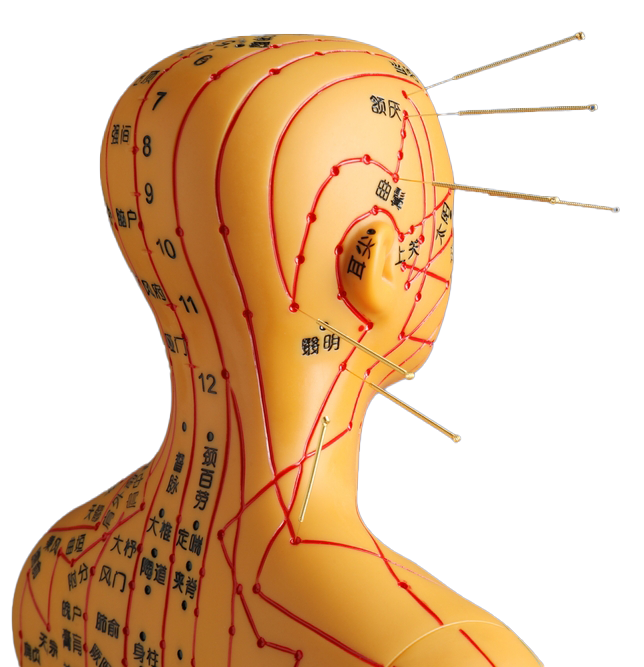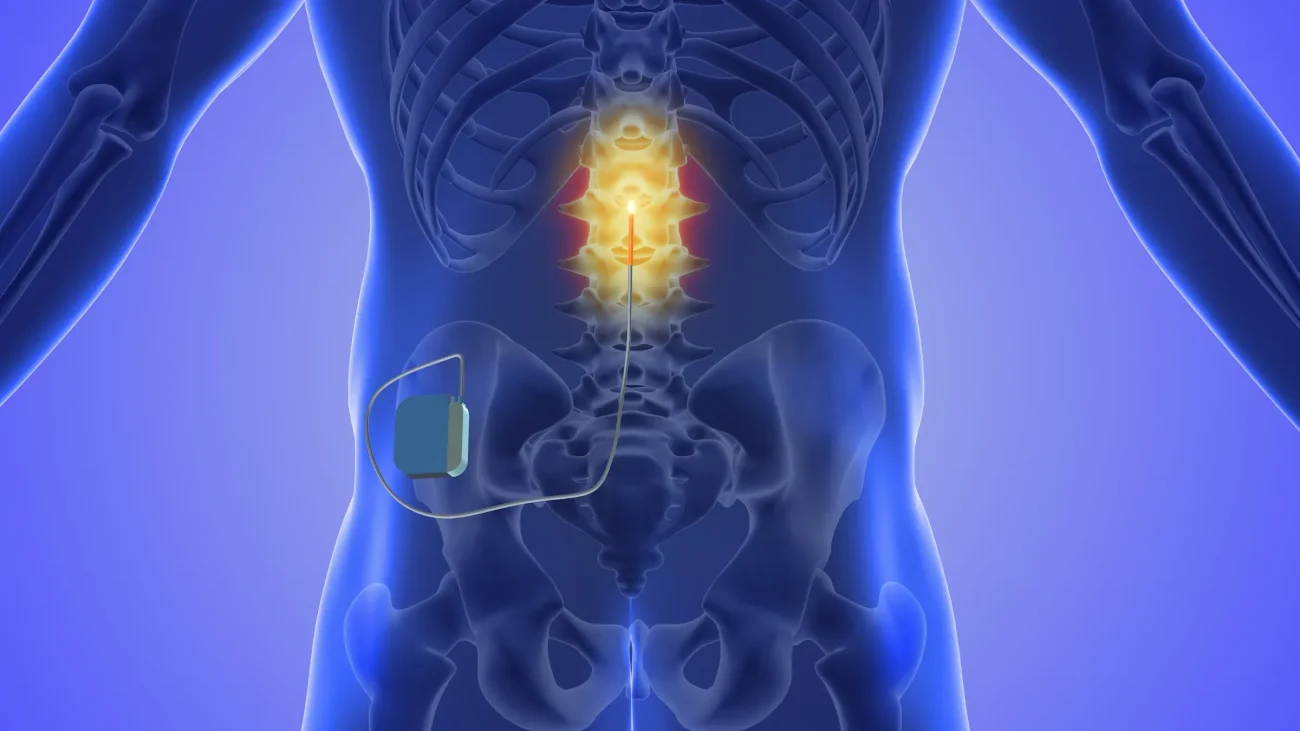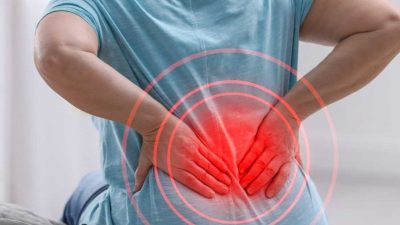- Facet joint Radiofrequency Thermocoagulation (RFT) Treatment
- Radiofrequency Thermocoagulation Dorsal root ganglion (DRG) radiofrequency thermocoagulation (RFT)
- Discitis Procedure
- Sacroiliac Joint Radiofrequency Treatment (Simplicity)
- In-Disc Ozone Therapy
- Nucleoplasty
- Transforaminal Injection (Pinpoint)
- Facet joint block
- Epidural Injection
Spinal cord stimulation (pain pacemaker)
- Home
- Agri BatteryAdvanced Treatments
- Spinal cord stimulation (pain pacemaker)
Contents
Toggle- Creating an individualised treatment plan
- The role of different specialities (physiotherapist, orthopaedist, psychologist, neurosurgeon)
- Pain treatment during pregnancy
- Treatment of chronic pain in the elderly
- Pain management in children
- Stress management
- Healthy eating
- Ergonomic living arrangements
- Exercise and mobility
- Facet joint Radiofrequency Thermocoagulation (RFT) Treatment
- Radiofrequency Thermocoagulation Dorsal root ganglion (DRG) radiofrequency thermocoagulation (RFT)
- Discitis Procedure
- Sacroiliac Joint Radiofrequency Treatment (Simplicity)
- In-Disc Ozone Therapy
- Nucleoplasty
- Transforaminal Injection (Pinpoint)
- Facet joint block
- Epidural Injection
- Cancer pain
- Permanent Epidural / Spinal Port Application
- Vascular Port (Permanent Vascular Access)
- Trigeminal Nerve RFT
- Blockade of Ganglion Stellatum
- Lumbar Sympathetic Ablation
- Facet joint Radiofrequency Thermocoagulation (RFT) Treatment
- Radiofrequency Thermocoagulation Dorsal root ganglion (DRG) radiofrequency thermocoagulation (RFT)
- Hernia Burning (IDET)
- Discitis Procedure
- Sacroiliac Joint Radiofrequency Treatment (Simplicity)
- Permanent Epidural / Spinal Port - Pump System
- In-Disc Ozone Therapy
- Nucleoplasty
- Peripheral Nerve Block
- Transforaminal Injection (Pinpoint)
- Facet joint block
- Epidural Injection
- Intra-articular Fluid Treatment
- Dorsal root ganglion (DRG) radiofrequency thermocoagulation (RFT)
- Spinal cord stimulation (pain pacemaker)
- Ergonomic living arrangements
- Spinal cord stimulation (pain pacemaker)
- Nucleoplasty
- Radiofrequency ablation
- Herbal solutions
- Dry needle treatment
- Anti-ageing treatments
- Ozone therapy
- Cupping therapy - Cupping
- Mesotherapy
- Prolotherapy
- Acupuncture
- Stem Cell Therapy
- Nerve blockages
- Corticosteroid injections
- Massage and relaxation techniques
- Manual therapy
- Electrotherapy
- Neuropathic pain medications
- Anti-inflammatory drugs
- Muscle relaxants
- Painkillers (paracetamol, ibuprofen, etc.)
Spinal Cord Stimulation (Pain Battery): An Innovative Solution to Chronic Pain
Chronic pain is a condition that significantly reduces quality of life and restricts daily activities. Persistent pain around the spinal cord or nerve roots may not always respond adequately to conventional treatments (medication, physiotherapy, injections, etc.). In such cases Spinal Cord Stimulation (SCS) or as it's colloquially called "pain pacemaker"is emerging as a promising option. In this article, you will find comprehensive information about what spinal cord stimulation is, how it works and under what conditions it can be applied.
1. What is Spinal Cord Stimulation?
Spinal cord stimulation, electrical impulses is an implantation treatment method that aims to manage chronic pain. It aims to block pain signals before they reach the brain by sending electrical impulses to certain parts of the spinal cord.
- Electrical Stimulation: It is obtained by means of a battery (generator) placed under the skin (usually in the lumbar or hip area) and electrodes placed near the spine.
- Suppression of Pain Sensation: The stimuli have a disruptive effect on the transmission of nerve signals to the brain. As a result, the patient may no longer feel chronic pain or experience a significant reduction in pain intensity.
2. In which cases is it preferred?
- Pain that does not go away despite surgical intervention: If the pain has become persistent after spinal surgery (lumbar or cervical herniated disc surgery) and other treatments have failed to produce an adequate response.
- Diabetic Neuropathy or Peripheral Neuropathy: Chronic pain with intense burning, stinging and numbness, especially in the legs and feet.
- Complex Regional Pain Syndrome (CRPS/RSD): In severe, persistent and treatment-resistant pain that develops after injury or surgical intervention.
- Blood Circulation Problems: Ischaemic pain due to vascular occlusion or insufficient blood circulation in the extremities can provide additional relief.
- Other Pain of Neuropathic Character: Chronic pain from the nervous system, such as trigeminal neuralgia or persistent sciatica pain.
In short, spinal cord stimulation can be an effective solution in cases of "intractable" and "refractory" pain in people who meet the patient selection criteria.
3. How Does Spinal Cord Stimulation Work?
- Pilot Application (Trial Phase):
- A testing process is usually required before a permanent battery is installed.
- Under local anaesthesia, temporary electrodes are placed close to the spinal cord and pain control is tested via an external battery.
- This process can last from a few days to several weeks. The patient evaluates how much pain relief there is. If the success rate is high, the permanent implant phase is started.
- Permanent Implant
- A small surgical procedure is used to insert the permanent pacemaker.
- The electrodes are placed on the spine and the generator (battery) is placed under the skin (on the waist, abdomen or buttocks).
- The battery sends electrical impulses of the desired intensity and frequency by external programming.
- Programming and Tracking:
- The pain specialist or technician adjusts the battery programme individually. Depending on the area of pain and the comfort level of the patient, different frequency or amplitude options can be tried.
- With the help of a hand-held remote control, the patient can also adjust the stimulation level according to his/her needs within certain limits.
4. Procedure Process and Considerations
- Evaluation and Decision:
- The patient's pain history, medical history and current health status are examined.
- In the light of imaging methods such as MRI, CT and neurological examinations, eligibility for SCS is determined.
- Anaesthesia and Operation:
- In the pilot application, local anaesthesia is used, whereas with a permanent implant, a short operation is usually performed under general or local anaesthesia.
- After the operation, the patient can return home in a few days.
- Recovery and Rehabilitation:
- The patient should avoid heavy physical activities in the first postoperative period.
- During the recovery period, the battery settings are optimised by the doctor and the team.
- Regular check-ups are performed and additional physiotherapy programmes may be recommended if necessary.
Things to Consider
- The procedure may be risky for patients with bleeding disorders, those at risk of serious infection or patients with extensive spinal deformities.
- SKS does not aim to eliminate pain completely, but to reduce it to a manageable level.
- The battery life of the device may vary between 5 and 10 years, after which battery replacement or additional operations may be required.
5. Advantages
- Minimally Invasive Approach: Less tissue damage compared to major surgery on the spine.
- Long Term Pain Control: In successful patient selection, pain can be greatly reduced.
- Reducing Drug Use: Patients may become less dependent on opiates or other strong painkillers.
- Adjustable and Reversible: The patient can change the stimulation level as needed; if desired, the device can be surgically removed.
6. Possible Side Effects and Complications
- Infection: In rare cases, infection of the skin or deeper tissues may develop at the implant site.
- Device Malfunction and Battery Problems: Additional surgery may be required due to mechanical problems, cable breakage or depletion of battery life.
- Inappropriate Patient Selection: SKS may not be suitable for patients with severe psychiatric disorders, substance abuse or pathology that can be corrected by surgery.
- Surgical Risks: There is a low risk of complications such as nerve injury and cerebrospinal fluid leakage.
7. Conclusion and Summary
Spinal cord stimulation, in cases where it is difficult to manage chronic pain is a seminal treatment modality. The minimally invasive insertion of electrodes and a subcutaneous generator into the spine can modulate pain signals and bring comfort and freedom of movement into the patient's life. Of course, this method is not suitable for everyone, so detailed assessment, testing and supervision by an experienced pain team are essential.
If you have severe pain that affects your daily life and is resistant to conventional treatments, you can consult a pain (algology) specialist, neurosurgeon or physiotherapist to find out whether spinal cord stimulation is the right option for you. Remember that pain management requires a personalised and multidisciplinary approach. We wish you a healthy day!
Our treatments
- Home
- Agri BatteryAdvanced Treatments
- Spinal cord stimulation (pain pacemaker)





